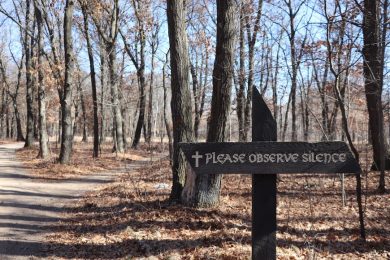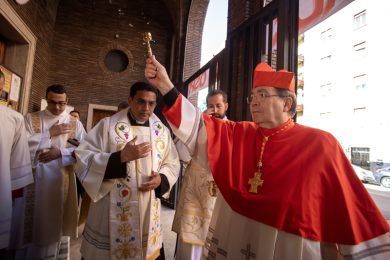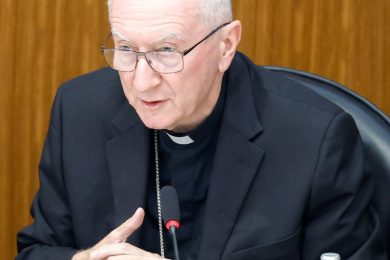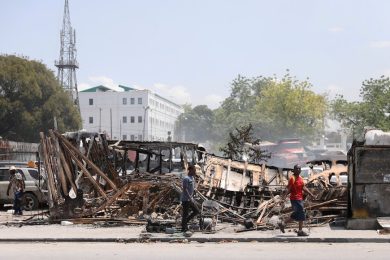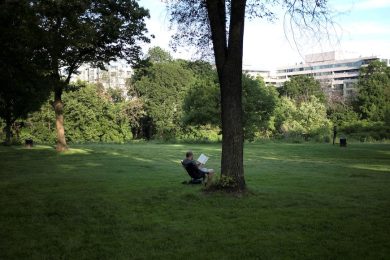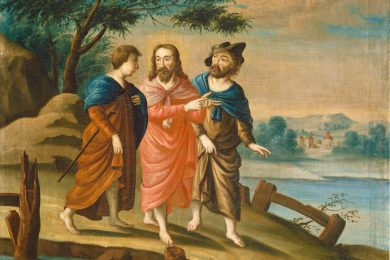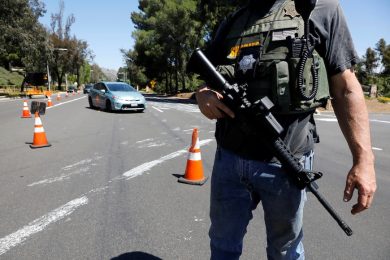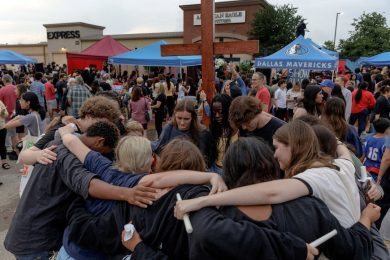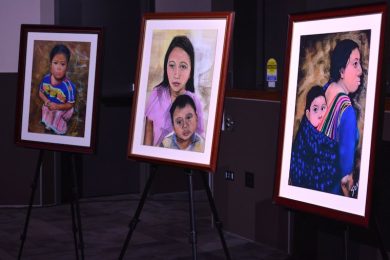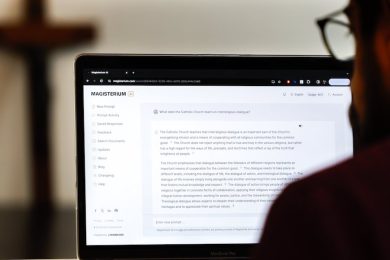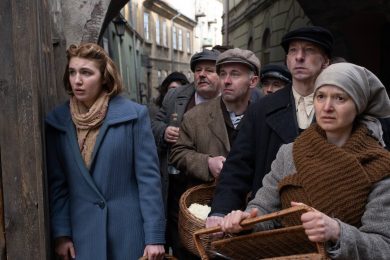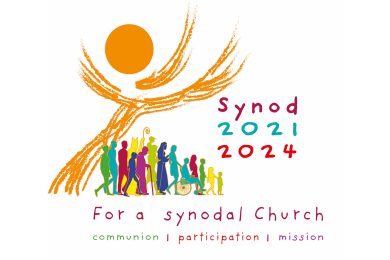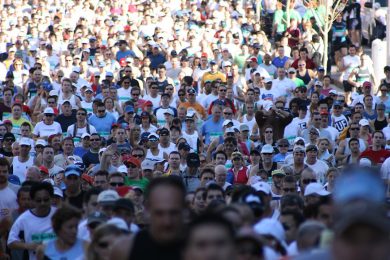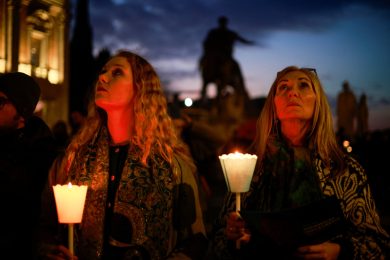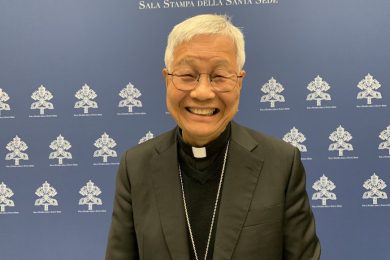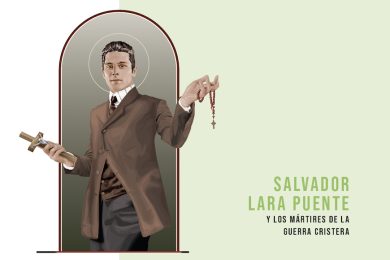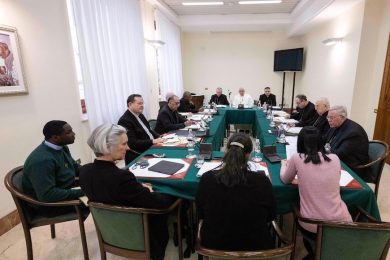On her last night of volunteering at La Frontera migrant shelter in Laredo, Texas, Benedictine Sister Mary Weidner was packing up to leave the center when a U.S. Border Patrol bus carrying 47 asylum-seekers arrived at the camp.
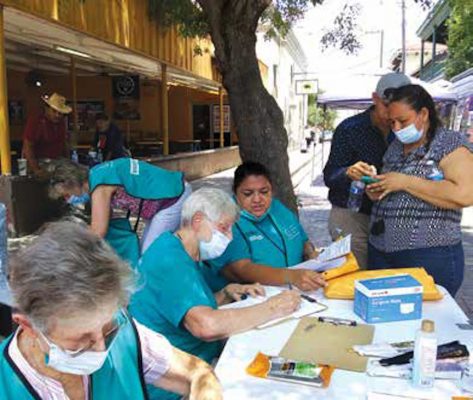
“They got off this bus and they stood in line, as I’m sure they’ve been standing in line for months,” she recalled. “I was just looking at all of them, looking so hot and so tired and so discouraged. And then, among them, there was a little girl who had a bright purple dress on. She was probably 2 or 3 years old, and she just started twirling around and singing a little bit. She didn’t know she wasn’t supposed to be happy. Pretty soon everybody in that line was kind of smiling and I thought, ‘It takes a child to bring us to hope again.’”
The shelter in Laredo is one of five new centers Catholic Charities has opened along the U.S.-Mexico border to mainly serve migrants who have been released to the U.S. to begin their process of seeking asylum. The border patrol brings people from the U.S. Immigration and Customs Enforcement detention centers to the shelter, where volunteers such as Sister Mary provide food, clean clothing and a safe place to sleep until they can make travel arrangements to connect with their sponsors. Most stay only one night.
Some stay longer, like one man Benedictine Sister Judy Kramer encountered.
“One of the things that kind of broke my heart was a man and his son who waited at La Frontera for his wife and two adult children who were in a different detention center. He waited there hoping they would come to the center. Well, he waited for over a week. All that week, he would wash towels and sheets every morning and put them in the dryer and fold them. But they never arrived,” she said.
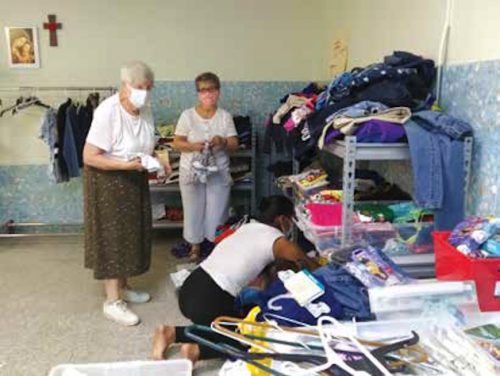
Along with Sisters Mary and Judy, Sisters Bridgette Powers and Christian Morris — all members of St. Benedict’s Monastery in St. Joseph — also traveled to Laredo in June. There, they worked with many other volunteers, mostly women religious, from around the country preparing meals, doing laundry and processing intake paperwork. The Leadership Conference of Women Religious, a national association of the leaders of congregations of Catholic women religious in the United States, put out a call through Catholic Charities to assist in one of the five centers.
When the call came, Sister Christian said two thoughts stirred in her to serve at the border.
“One was my awareness of the millions of displaced people in need. I thought if there’s some little thing I can do, I’d like to do that,” she said. “And the second thing is quite personal, and that’s that I was at a point where I felt like I had sort of settled into a comfort zone and have everything I’d ever need or want. I wanted to go to be with people who have much less than I do, who are, according to society, much less than I am, so that I could rekindle and rediscover a sense of gratitude for all that I have been given and often take for granted.”
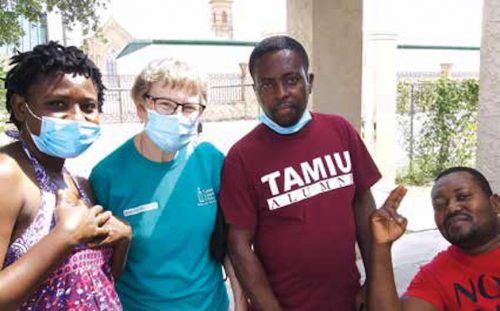
Sister Bridgette has worked with Latino communities in the past and also felt called to go to Laredo.
“I love working with children, and at La Frontera, there were often families that would come through seeking asylum,” she said. “The children really desired some enrichment and some play. That’s what I had the blessing and privilege of being able to offer. We would color, we would play, we would get out some toys, and it was just amazing. Their eyes would light up when you would bring out toys and crayons. You could talk with them as they were coloring or playing, and engage with them, and that was really beautiful to do that and just to see them be kids.
“I think, as they travel, parents have to be very strict and on guard with them, so to give them an opportunity to not have to do that, not have to worry about that, was really important.”
The sisters also met a new mother with a five-month-old baby.
“We noticed that the baby wasn’t looking healthy,” Sister Bridgette said. “We got him some water in a bottle and it took him a moment to figure out how to use the bottle because he’d always had mom nursing him. And as soon as he got a few ounces of water in him, he seemed so much happier. As we were giving him the water, we learned that the family had left maybe four or five days after the little baby was born. And they had just arrived in the United States, five months later.”
“They’d been standing in line probably since the baby was born,” Sister Judy added. “So, we tried to tell the mom what a wonderful mother she must be to keep that child alive for five months. He smiled and smiled. He didn’t know to be afraid.”
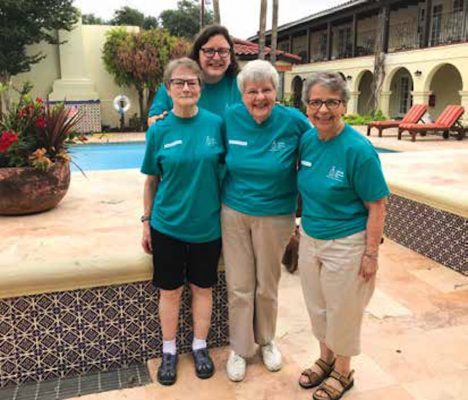
“It was just such a testament to love,” Sister Bridgette said. “That’s what I keep thinking about, that it was a testament to the love and care that his family had for him, and particularly his mother, to go through what they had gone through to get here.”
Unfortunately, the stories of hope and joy were intermingled with accounts of extortion, kidnapping, robbery, rape and physical abuse.
“These people are desperate, it’s deeply tragic,” Sister Christian said. “Despite their hardships, what was remarkable and inspiring was the faith that many of these people expressed, so deep and so steady, believing that ‘God brought us here, God will sustain us, God will help us, this is a miracle that we survived this and that.’”
By continuing to pass on the narratives, the sisters hope that people will take the time to learn about the processes for those seeking asylum as well as to learn what the Church teaches about it (visit https://bit.ly/2SRJRlP to see what the U.S. bishops have to say).
[perfectpullquote align=”right” bordertop=”false” cite=”” link=”” color=”” class=”” size=”14″]WHAT IS ASYLUM?“Asylum is an important form of international protection that can assure the safety and well-being of individuals who have fled their homeland because of a well-founded fear of persecution due to their race, religion, national origin, political opinion, or membership in a social group.” — Justice for Immigrants, an initiative of the U.S. Conference of Catholic Bishops [/perfectpullquote]
Sister Judy, who served in Chile for seven years and is bilingual, visited with many of the travelers, many of whom were from Haiti, Guatemala, Honduras and Venezuela.
Once, while working in the kitchen, one of the volunteers sent for Sister Judy to help with translation. In the clothing room, she met two more women and was asked to translate their conversation, which touched on an experience with a “coyote,” an individual paid to guide others across the border.
“One woman asked if the other had a good journey and the second replied, ‘No, the coyote who brought me robbed me and raped me,’” Sister Judy said.
“There was nothing we could do so the four of us locked arms and prayed,” Sister Judy said. “Thanks be to God, I did have holy water in my purse, so I took holy water and I blessed her on the forehead and her friend. But then I insisted that she bless us also on the forehead. I told her, ‘We are all sisters. You are a woman of great dignity. You have suffered. All women have suffered because of your suffering.”
Although they didn’t always know the extent of the horrors the people faced along the way, the sisters heard enough to know that it must have been dire to compel them to take the risks. And even when they think they are finally safe, they face more danger coming those last few steps from the border to the center.
“Each time people were released from detention, the border patrol, in uniform, accompanied them, walking across the bridge and bringing them to where we were,” Sister Judy said. “We were told that there would be unscrupulous people on both sides of the bridge that were watching carefully to see if they could rob these people. Or there were cases where they would kidnap children and then hold them, because they knew [the asylum-seekers] had money saved for their plane or bus tickets to meet their sponsors. We were told to be vigilant and to tell the parents don’t ever be far from their children.”
Each of the sisters feels both anguished and honored to have spent time working at the border in 100-degree heat, making meals and making friends.
“It definitely is something that will stay with me for life,” Sister Bridgette said, “and something that I feel I was really privileged to be a part of. The asylum-seekers taught me so much about hospitality, even the way they received us, it was beautiful. … It has really brought me to a deeper awareness, a more profound understanding of how we’re all human and universally in need of care.”
And their work did not only affect the four of them, it affected their whole community.
“While we were away, the other sisters held us in prayer and picked up our normal work. Pictures were sent back and shared with the community on a bulletin board so that the sisters here could be part of that ministry in whatever way they could,” Sister Mary said.
“As a community, we try to keep our ear to the ground, to be aware of the need. We certainly want to continue to be aware of those needs and respond to them in whatever way we can, whether it’s sending people there, or other ways that we can support that ministry,” she said.
That includes keeping their stories alive.
“When I got to the center, I had trouble sleeping at first,” Sister Christian said. “I would be seeing faces and I felt sad. Later, I had the opportunity to talk with people and hear their individual stories. When I was face-to-face with someone, I no longer saw differences as much as our common humanity. I had a conversion within myself to recognize the individual faces of Christ. That’s what I hope people see and hear from these stories, to recognize the oneness of our humanity.”


